Six Dive Locations Only Reachable by Liveaboard
From meeting new buddies from around the world to being able to get wet five times a day, liveaboard diving has plenty of perks.
But one of the best benefits of a liveaboard is reaching areas of the ocean that are inaccessible by dayboat.
Out in the big blue, you never know what you’ll encounter. Many of these far-flung destinations are part of marine protected areas little influenced by human activity. Their locations alone—isolated in the middle of major waterways—make them an attractive pit stop for migrating pelagic megafauna like sharks, rays and whales.
Granted, these are not always easy destinations to access. In fact, the most remote islands may take up to 36 hours to reach. But once you’re anchored over your first dive site in a floating hotel hundreds of miles from civilization, you’ll realize the travel was a small price to pay for the adventure that awaits.
1. Tubbataha, Philippines
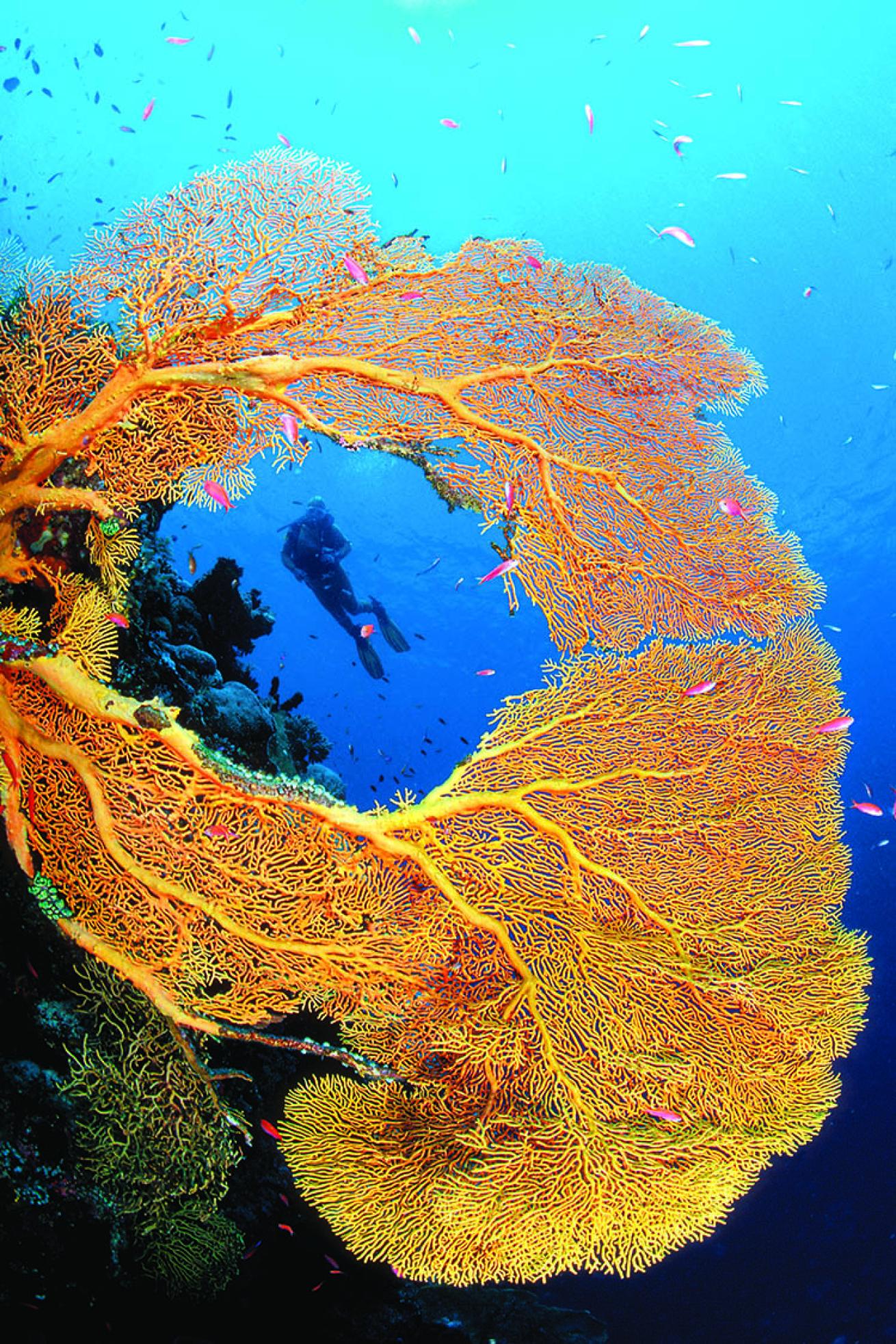
Waterframe — Agence / Borut / Furlan / BiosphotoA giant sea fan (Annella mollis) at Tubbataha Reef.
Tubbataha Reefs Natural Marine Park is made up of two atolls dense with biodiversity that serve as nesting grounds for endangered turtles and more than 100 species of birds. Below, pristine reefs cover the seafloor. “Tubbataha is kind of a hidden gem,” says Kevin Purdy, sales marketing manager of All Star Liveaboards. “The closest island is 100 miles away, so it’s like a little oasis that draws in all kinds of marine life.”
This UNESCO World Heritage Site might be your best bet to see whale sharks, manta rays, hawksbill turtles, hammerheads, spinner dolphins and schooling gray reef sharks all in one day.
“You get one of the higher concentrations of apex predators and megafauna in the world,” Purdy says. Large reef fish, guitar sharks and eagle rays fly through cleaning stations like Shark Airport and Delsan Wreck; frogfish, orangutan crabs, and other tiny critters wait at sites such as Asul Buhangin and Wall Street.
After a week in the Sulu Sea, you’ll surely realize why Purdy says “everyone who dives Tubbataha just leaves in awe.”
Divers Guide
Average Water Temp 78 to 85 degrees Fahrenheit
What to Wear A skin or 1mm shorty; if you run cold, a 3 mm
Average Viz 40 to 120 feet
When to Go March through June
Operators
All Star Stella Maris, allstarliveaboards.com
All Star Infiniti, allstarliveaboards.com
Philippines Aggressor, aggressor.com
Philippine Siren, blueotwo.com
2. Wolf and Darwin Islands
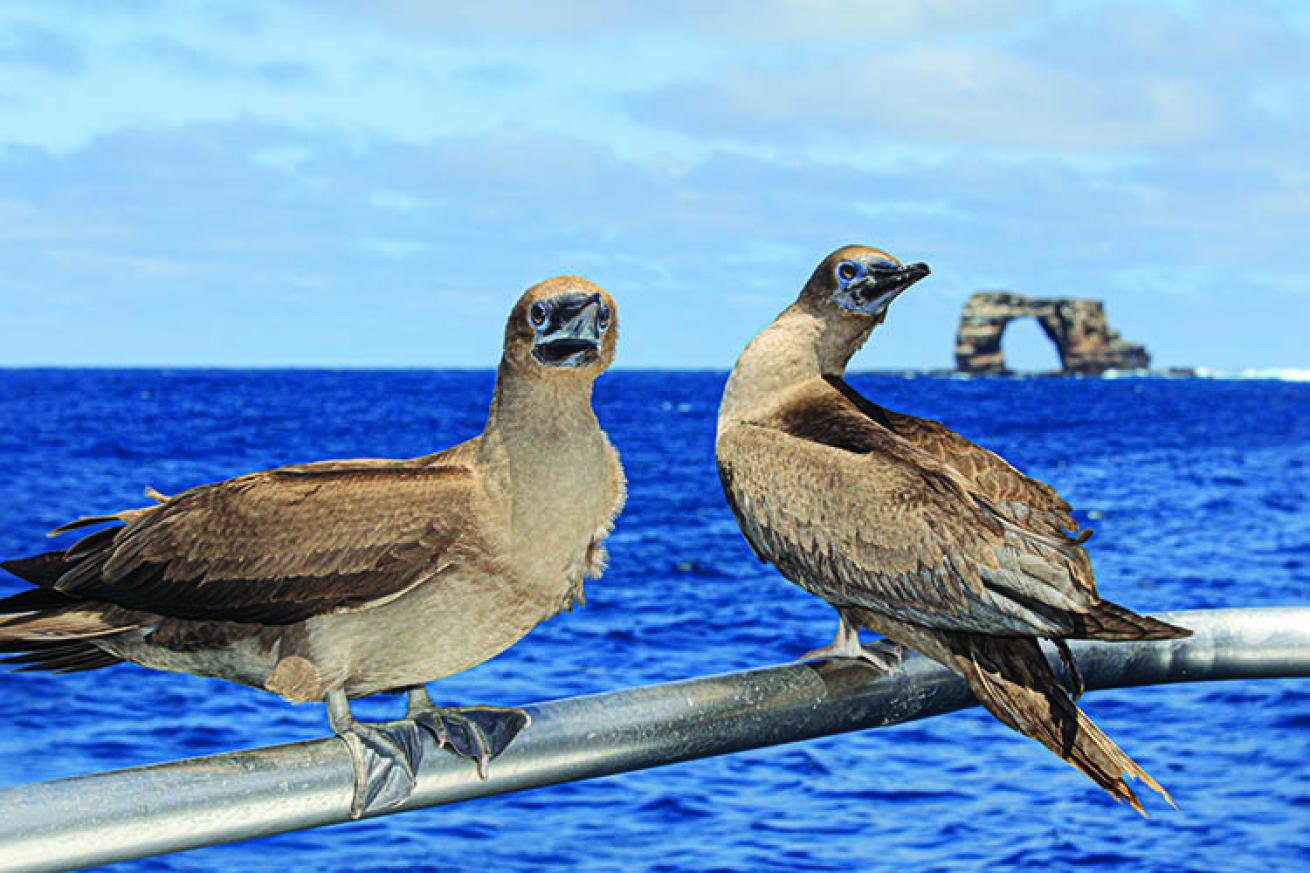
Brandon ColeThe popular bucket list destination can only be reached by liveaboard.
Diving the iconic Darwin’s Arch is on the bucket list of many divers, but its remote location—some 200 miles northwest of the main islands of the Galapagos archipelago— means only those who travel by liveaboard will have the chance.
From the main island of Santa Cruz, it’s an 18- to 24-hour boat ride to Darwin Island and neighboring Wolf Island, depending on currents. But “the sheer abundance of life, the adrenaline of diving with schools of hammerheads, and the biodiversity” make the trek worth it, says Jennifer Cumming, Galapagos general manager for Explorer Ventures.
“Wolf and Darwin are the only islands in Galapagos deemed tropical, so they have a greater variety of corals and tropical fish species not found in the central or western islands,” Cumming says.
What’s more, at the right times of year, you’re nearly guaranteed to see aggregating hammerhead sharks, spiraling schools of jacks, endemic marine iguanas, occasional dolphin pods or whale sharks.
Landslide and Shark Bay are two popular sites at Wolf Island. Both are wall dives that feature large, shallow boulders frequented by Galapagos sharks and sea lions, Cumming says. Plus, the slope of the wall provides a great lookout point to take in the magnitude of the region’s hammerhead schools.
Darwin Island, including the Darwin’s Arch dive site, has natural “viewing platforms” where divers can post up and watch the show of megafauna and reef fish that makes this corner of the Enchanted Isles a magnet for divers across the globe.
Divers Guide
Average Water Temp 65 to 80 degrees Fahrenheit, but can drop into the 50s at depth
What to Wear A dry suit or a 7mm wetsuit, gloves and a hood
Average Viz 75 to 100 feet
When to Go June to December
Operators
Galapagos Aggressor III, aggressor.com
Galapagos Master, blueotwo.com
Galapagos Shark Diving, galapagossharkdiving.com
Galapagos Sky, galapagossky.com
Humboldt Explorer, explorerventures.com
Tiburon Explorer, explorerventures.com
3. Hallaniyat Islands, Oman
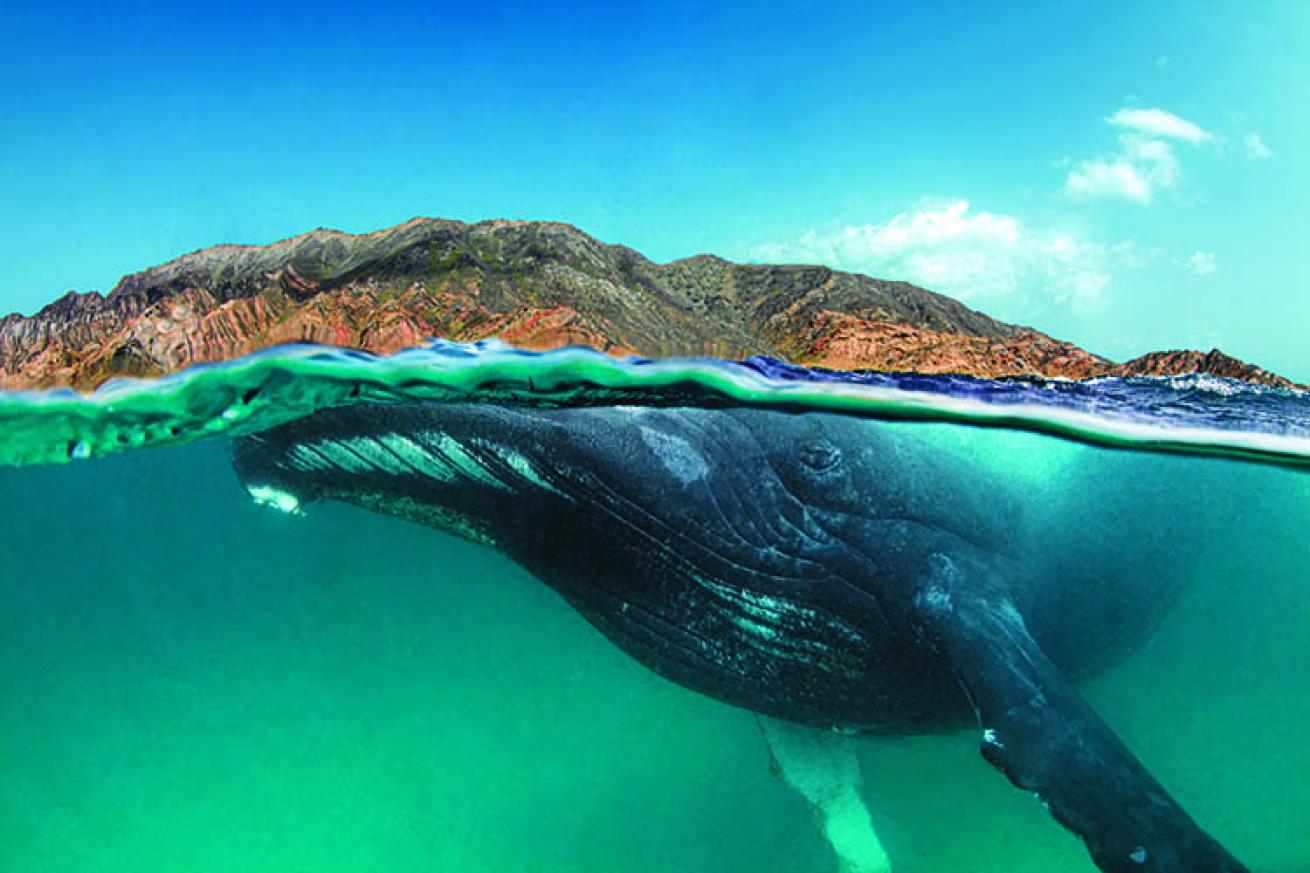
Tobias FriedrichOmar's humpbacks are unique: They are resident, and thus isolated from the global population.
Twenty-five miles off the southeastern coast of Oman, the Hallaniyat Islands are a largely untouched playground for divers. Wrecks and reef sites are being discovered constantly, so no two liveaboard trips will be exactly alike. “Oman is such an amazing place,” says Wayne Brown, CEO of Aggressor Adventures. “I’ve been diving all over the world, and I have never seen as much marine life as I did there on every dive.”
After an eight-hour ride from the mainland city of Salalah, divers are welcomed to the Hallaniyats by humpback whales, pods of spinner dolphins, mobula rays and green sea turtles— and those are just the creatures you may see from the surface. Comb the reefs of Hasikaya Coral Bay for shy octopuses, cute cuttlefish and flamboyant nudibranchs the size of your pinkie fingernail. The City of Winchester, the historic first shipwreck of World War I, has now become an artificial reef that attracts yellowfin barracuda, torpedo rays and swarms of mackerel. Take a ride down Fish Highway, a site at which “you go down and you’re just surrounded by thousands and thousands of fish,” Brown says. “It’s amazing.”
Brown also urges divers to experience Oman’s culture: “The history is just incredible.” And after all, if you’re journeying all the way there, you may as well have a few days of exploration to bookend your dip in the Arabian Sea.
Divers Guide
Average Water Temp 73 to 81 degrees Fahrenheit
What to Wear Keep warm with at least a 5mm suit, gloves and a hood, or a drysuit
Average Viz 30 to 80 feet, depending on the season
When to Go Aggressor runs tours from November to April
Operator
- Oman Aggressor, aggressor.com
4. Similan and Surin Islands, Thailand
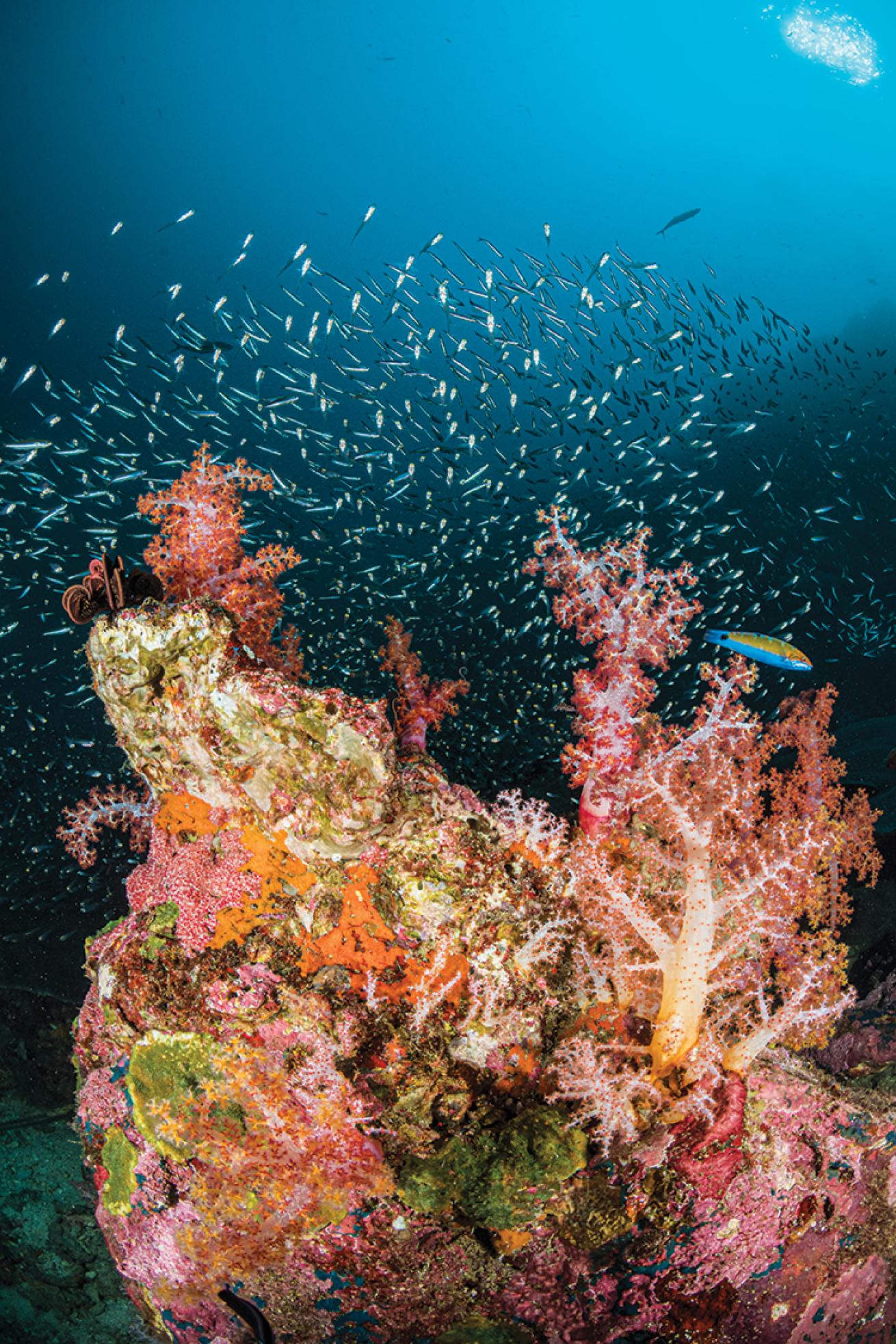
Alex TyrrellDendronephthya soft corals at Thailand's Hin Duen.
Along with manta rays, whale sharks and reef-dwellers like scorpionfish and octopuses, the secluded Similan Islands—located about 40 miles off the west coast of Phang Nga, Thailand—provide a postcard-perfect vista that’s well worth the travel to get there.
Says Gilbert Redmann, owner of Sunrise Divers Phuket, “You’re cruising during sunset, watching the stars at night on the upper deck—really exploring something new.”
The archipelago’s establishment as a national park in 1982 has made its rocky landscapes and dive sites like Elephant Head and East of Eden a haven for critters big and small, from turtles and reef sharks to nudibranchs and ribbon eels.
About 60 miles north of the Similans lie the Surin Islands, home to the famed Richelieu Rock. Redmann says these destinations are often included in the same liveaboard itinerary, along with Koh Bon and Koh Tachai.
“Richelieu Rock is a remote dive site, but it’s probably the best dive site in Thailand,” Redmann says. “Because it’s remote, you have pelagics, you have big fish, you have schools of fish and you have healthy corals.”
The Surin Islands are protected as well, as they’re part of Mu Ko Surin National Park. Thanks to Thai conservation efforts, both the Surin and Similan areas will remain prime liveaboard destinations for years to come.
Divers Guide
Average Water Temp 79 to 84 degrees Fahrenheit
What to Wear A shorty or full 3 mm suit should be comfortable for most divers, but some may only want a bathing suit
Average Viz 65 to 100 feet
When to Go The national park is open November through April
Operators
The Junk, blueotwo.com
The Phinisi, blueotwo.com
Sunrise Divers Phuket, sunrise-divers.com
Thailand Aggressor, aggressor.com
5. Revillagigedo Islands, Mexico
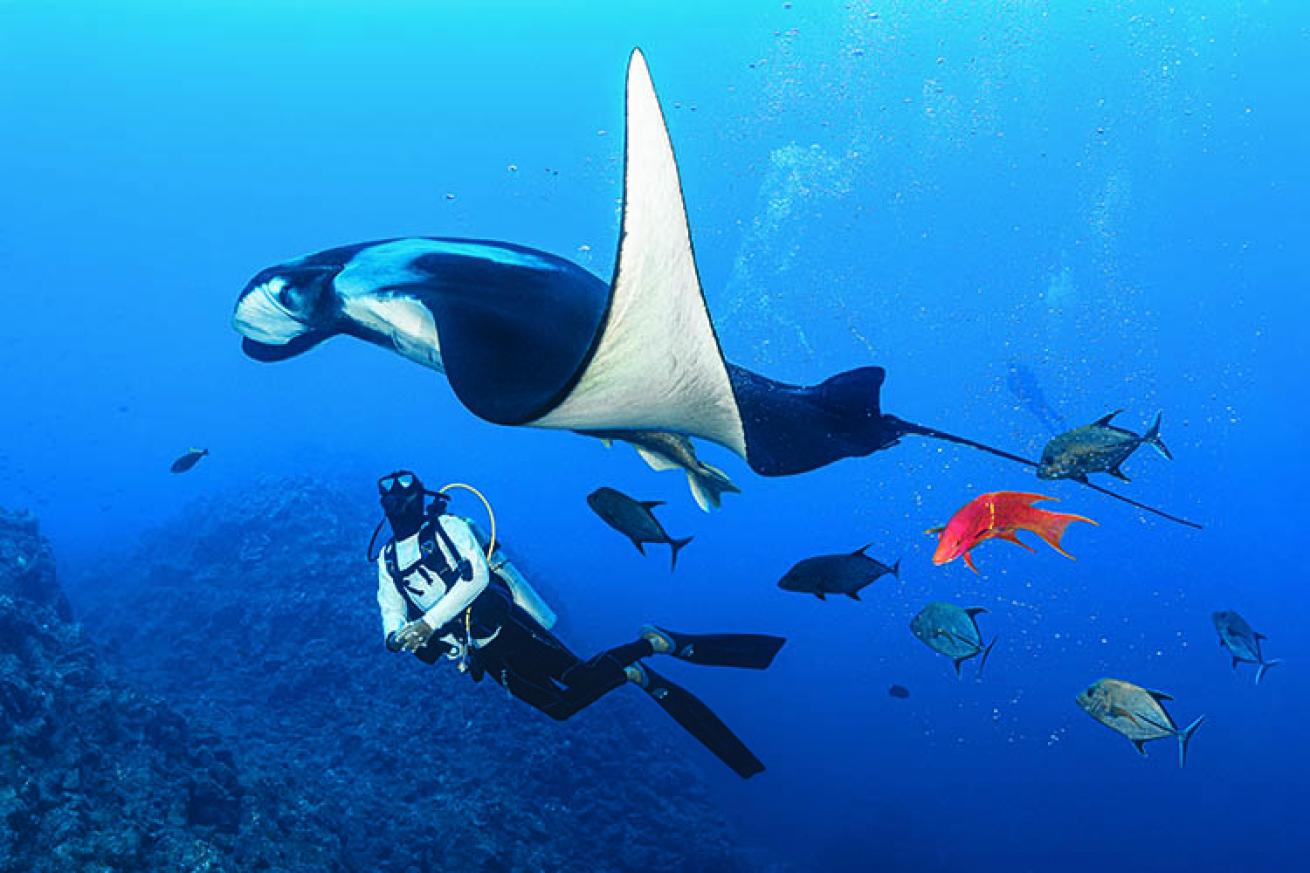
Jennifer PennerThe Revillagigedos offer close encounters with the big stuff.
Mexico’s Revillagigedo Islands are synonymous with liveaboards and big-animal encounters. The archipelago lies about 300 miles off the southern tip of Baja California, meaning a 24-hour sail is in order.
Four uninhabited volcanic islands make up the Revillagigedos: Socorro, Clarion, San Benedicto, and Roca Partida. They jut anywhere from 100 to 3,800 feet out of the water and extend to the seafloor, creating exceptional walls, pinnacles and sheer drop-offs that act as cleaning and feeding stations for oceanic mantas and half a dozen shark species, including mass aggregations of scalloped hammerheads.
“The Revillagigedos are part of a chain that goes all the way through Cocos and the Galapagos, so you have all of these unique undersea volcanic mounds,” Wayne Brown says. “Because of the remote nature, there’s just not a lot of pressure on the sites.”
Cabo Pierce, the Aquarium and El Canyon offer the chance to see just about any big animals you can imagine—humpback whales, pacific bottlenose dolphins, whale sharks, the list goes on.
Because these are important waterways for endangered megafauna, the islands were deemed a UNESCO World Heritage Site in 2016, and a year later were established as the Revillagigedo National Park. “Even though they’re remote, they’re patrolled by the local government to prevent illegal fishing and harvesting.”
Divers Guide
Average Water Temp 70 to 82 degrees Fahrenheit, depending on the season
What to Wear For optimal comfort, bring a 5 mm or 7 mm wetsuit, or even a drysuit
Average Viz 50 to 160 feet
When to Go The park is open November to May; whales are present January to April
Operators
Nautilus Explorer, nautilusliveaboards.com
Rocio del Mar, rociodelmar.com
Socorro Aggressor, aggressor.com
6. Cocos Island, Costa Rica
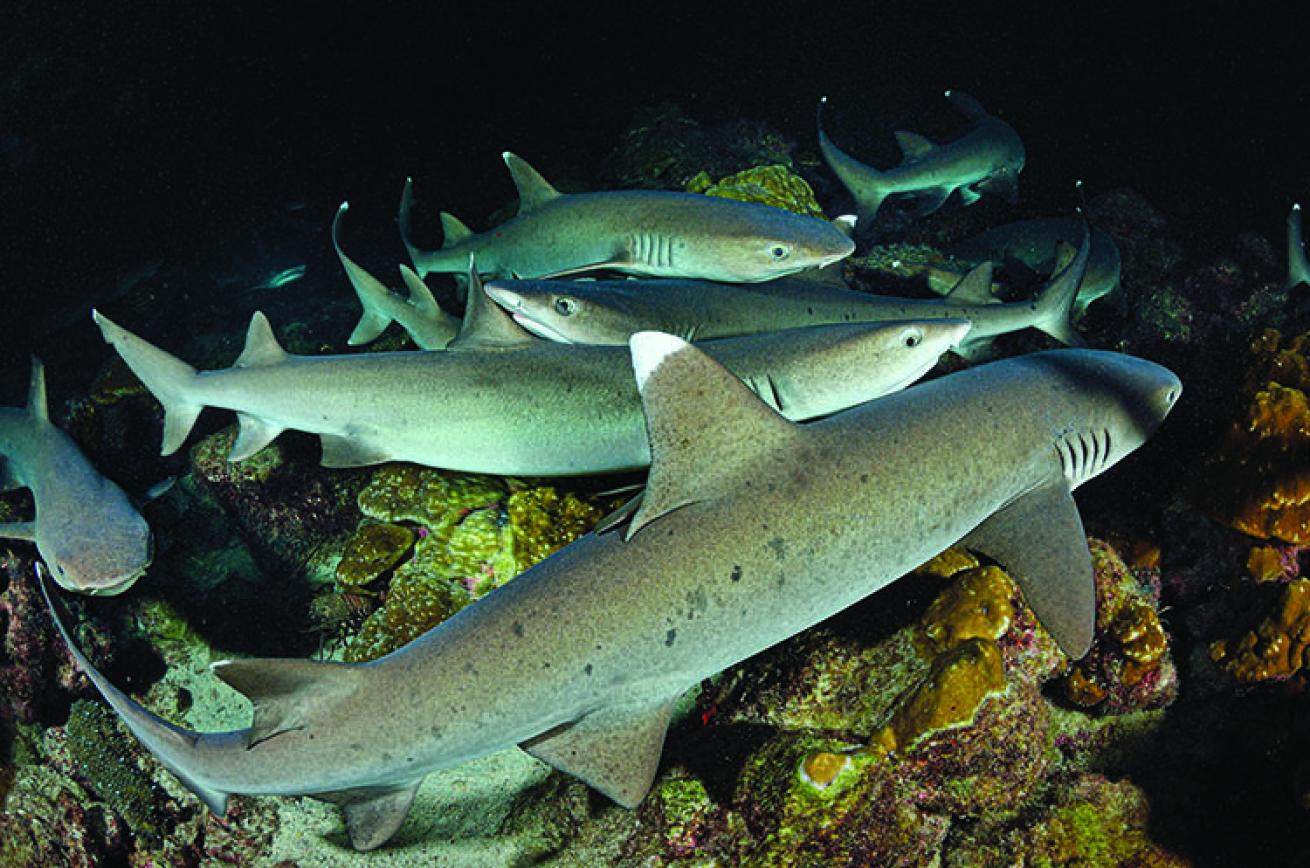
Damien MauricThe nightly shows put on by frenzied hunting whitetips is a Cocos hallmark.
Cocos Island’s remote location—340 miles southwest of mainland Costa Rica—makes the island a hotspot for big pelagics. Divers start their 32- to 36-hour journey to Cocos midday and arrive at the undersea jungle the next morning, more than ready to finally get wet.
“A bad day in Cocos would be considered an incredible day anywhere else,” says Jenny Waack, founder of Galapagos Shark Diving, a citizen science-focused liveaboard company that will start offering trips to Cocos in 2021.
On any given dive, you can see some 45 endemic marine species, baitballs rounded up by hungry sharks, dolphins and yellowfin tuna, and the area’s most famous inhabitants—scalloped hammerhead sharks.
But hammerheads aren’t the only resident toothy predators. Cocos is also home to Galapagos sharks, silkies, silvertips, whitetips and tiger sharks, which can be hard to come by elsewhere in the Pacific.
The island is so biodiverse not only because of its outlying location, but also because it’s a national park.
“To have the combination of so many different shark species, so many different ray species, turtles, sea lions and everything else you can see—it’s an experience you will never forget,” Waack says.
Divers Guide
Average Water Temp 76 to 82 degrees Fahrenheit
What to Wear A 3 mm shorty or fullsuit will be comfortable for most divers, but a 5 mm may be better for deep diving
Average Viz 60 to 100 feet, depending on the currents
When to Go Year-round
Operators
Galapagos Shark Diving, galapagossharkdiving.com
Okeanos Aggressor I, aggressor.com
Okeanos Aggressor II, aggressor.com










